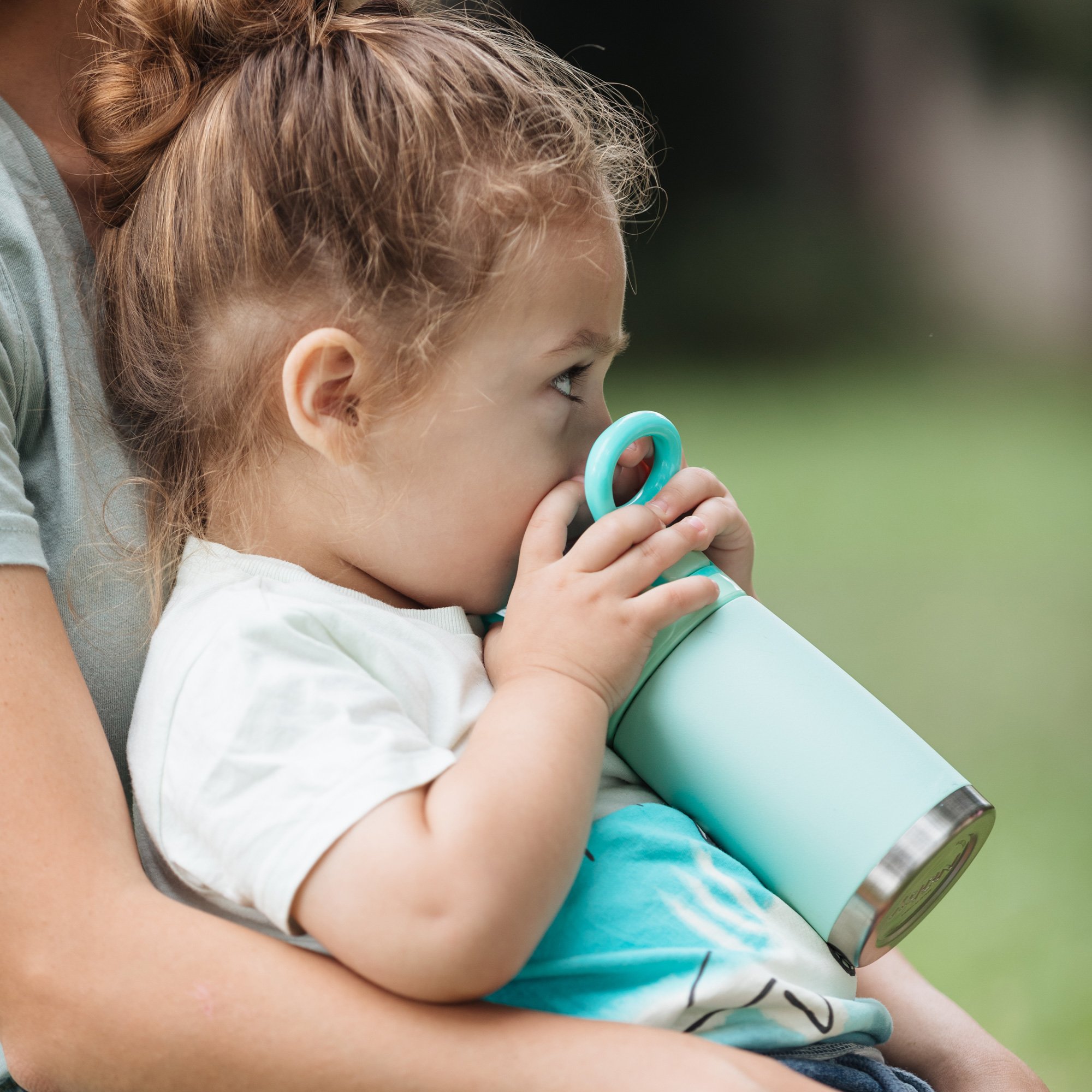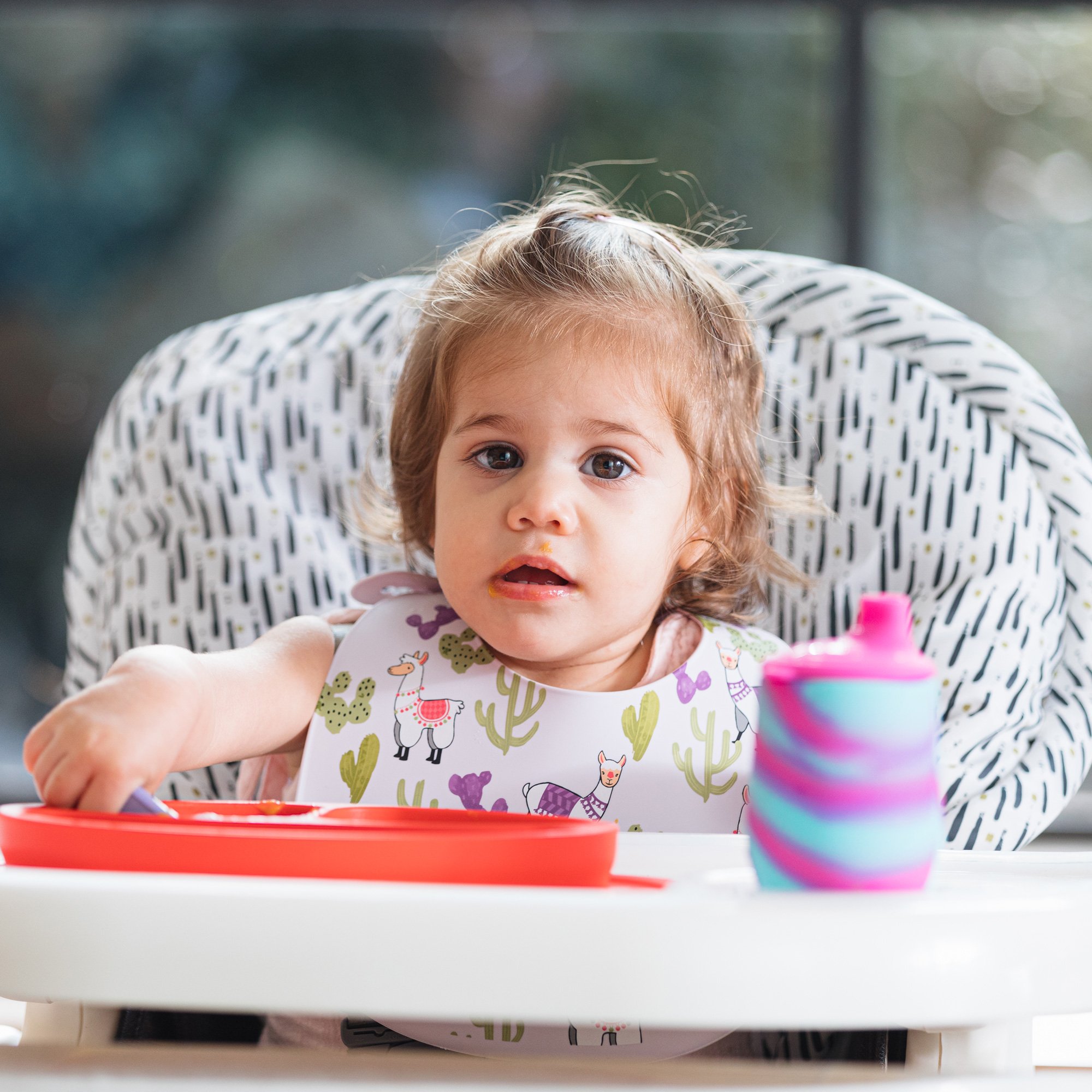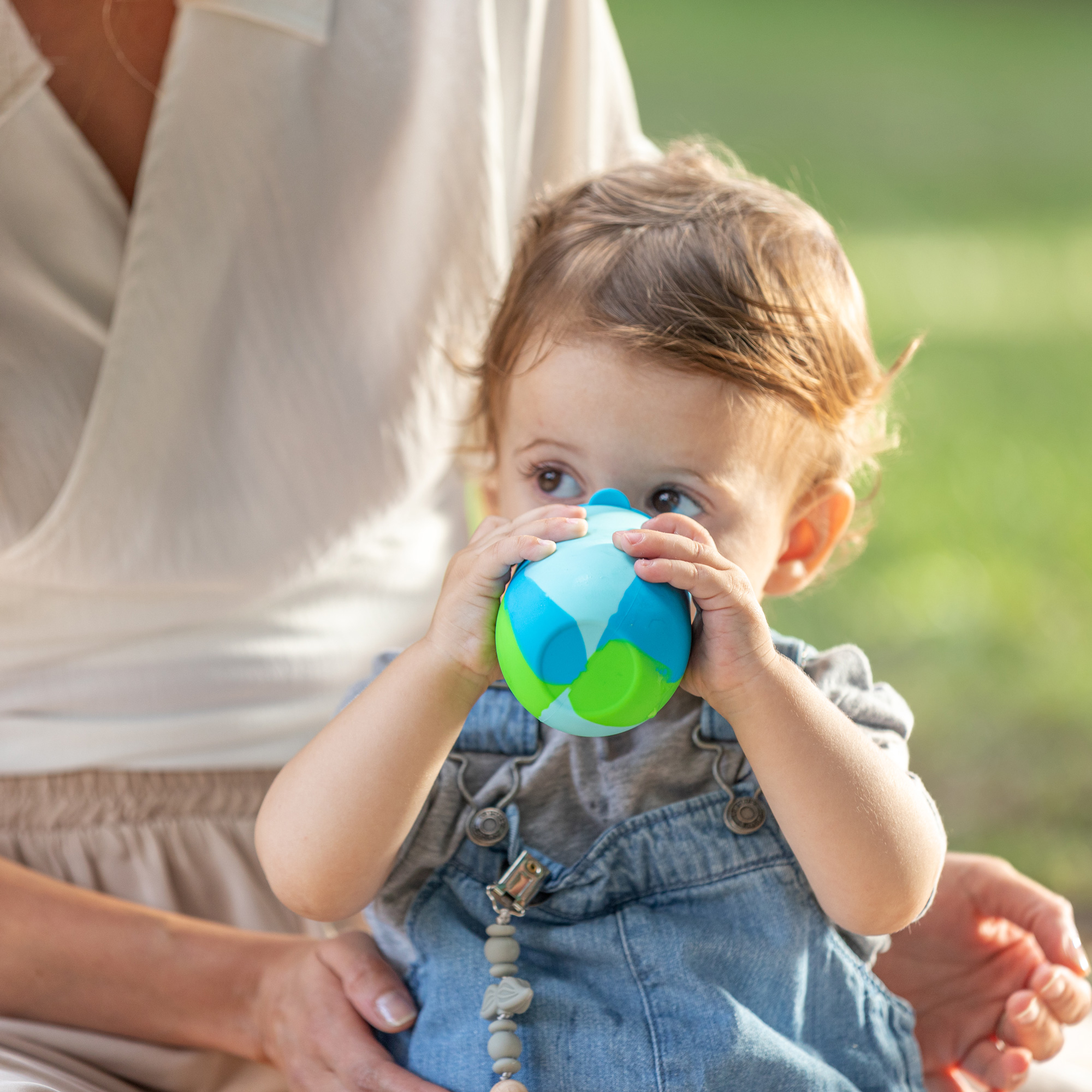Water is essential for our everyday health and well-being. It helps keep us hydrated, regulates our body temperature, protects our organs, and carries important nutrients and oxygen to our cells.
But what does it mean for babies? Should they be drinking water like the rest of us? Well, not exactly. Babies get everything they need from breast milk or formula in the first few months of their lives. Keep reading to find out when you can start giving your baby water and how to introduce water to them.

When Can Babies Start Drinking Water?
When your little one is around six months old and eating solid food, you can start introducing them to water. It’s not recommended to give them water if they are under six months, as breast milk and formula already consist of around 80% water. Giving them water too early could also lead to diarrhea and malnutrition as it could cause them to breastfeed or bottle feed less.
Once they reach six months, start offering them a little bit of water at a time from a sippy cup. This will help get them used to having water and begin the slow transition from bottle to cup.
How Much Water Should Babies Drink?
The amount of water babies need will depend on their age, the weather, the environment and their activity levels. It’s also important to remember that high-water foods, such as fruit, vegetables, and even soup, can also contribute to your child’s water intake.
Pro tip: if they’re fussy drinkers, give them a healthy snack of watermelon or strawberries to up their water intake.
Babies between 6-12 months old need 4-8 ounces of water a day, equating to just over half a cup. This can be served in small amounts at mealtimes when they’re eating solids. Some children might show interest in wanting more, especially as they reach the 12-month mark. But if they’re still breastfed, they won’t need any extra water. As they grow older, the general rule is to add 8 ounces for each year. This means a 2-year-old will need 16 ounces of water, and a 3-year-old will need 24 ounces.

Risks of Giving Your Baby Water Too Early
As we mentioned earlier, giving your baby water if they’re under six months can lead to some health issues. These can include:
- Lack of nutrients: Babies who drink water too early and fill themselves up will miss out on the important nutrients they get from breast milk or formula.
- Electrolyte imbalances: If your baby has a large amount of water too young, this can lead to water intoxication, where electrolytes in their bloodstream become diluted, impacting their normal bodily functions.
- No weight gain: Water contains no calories, so if they’re filling up on water instead of breast milk or formula, they won’t be gaining the appropriate amount of weight as they grow.
Benefits of Giving Your Baby Water
Of course, when your little one is the right age, there are many amazing benefits of introducing them to water, such as:
- Keeps them hydrated.
- Removes waste and toxic substances from their system.
- Transports nutrients and oxygen around the body.
- Maintains blood volume.
- Helps blood circulate.
- Keeps their joints and tissues lubricated.
- Helps their system stay balanced.
- Maintains a healthy weight.
- Improves mood, memory, and attention.
- Eliminates the need for fruit juice and other sugary drinks.

How to Introduce Water to Your Baby
So, your baby is ready to start drinking a small amount of water. That’s great! But how do you introduce it to them? When a baby starts to eat solid food, their need for liquids will increase. This means that the best time to start giving them water is during meal and snack times.
Start by giving them a small amount of water in a sippy cup and encourage them to drink from it. Young children learn a lot by copying, so if they see you drinking water at breakfast or lunchtime, they may try to imitate you. Using a sippy cup will also help them develop cup-drinking skills, which is vital for later on in life. You might find that they initially reject it, in which case, don’t force them to drink. It can take a little while for your child to get used to the plain taste, so stay patient and supportive.
If you’re worried your baby isn’t getting enough water or liquid, remember that fruits, vegetables, and popsicles can help their intake. You can make it fun by creating smoothies or popsicles from their favorite fruits, such as strawberries, blueberries, raspberries, or mangos, for a healthy and hydrating treat.
When your child is one year old, they can start to have more water throughout the day. Leave sippy cups and water bottles around in their playroom or the living room, so it’s easy for them to grab and drink from whenever they feel the need.
As they get older, they can also start to drink from their very own water bottle. Take a look at our range of water bottles available in bright colors and fun patterns of their favorite animals, which will help encourage them to drink more!



